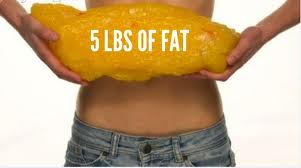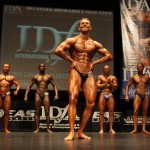In Part I we discussed the importance of training intensity which we defined as the
possible percentage of momentary muscular strength and volitional effort exerted during any given point of an exercise.
We also established that the only way to be sure that a muscle receives adequate stimulation from an exercise so that it may develop and grow stronger is by performing that exercise with maximum intensity, i.e., 100 percent of your effort. This means working the muscles to momentary muscular failure, the point at which despite your greatest physical and mental effort you cannot move the weight for another repetition.
Now you might say, “Wait! I never see anyone else at the gym doing this.” And my answer to you would be you’re right; which is why all those people still look the same despite working out for an hour and a half, four to six times a week.
Meanwhile I’ve personally conducted, observed and implemented the workout (and other variations of it) I am about to outline here—which will take approximately thirty-minutes to complete and performed three times a week at most—resulting in 30-60 percent increases in strength, 4-10 lbs. of fat-loss and 2-5 lbs. increases in lean muscle in just 4-6 weeks. Compared to the majority of gym goers and exercise enthusiasts it’s half the amount of exercise and time spent in the gym with double the results. It’s also a fraction of the wear and tear on the body.
At this point you are probably wondering how it’s possible to work out for such a short amount of time and so few days a week and achieve such significant results. Unfortunately when I give you the answer you’re still going to be wondering because it seems implausible.
The “secret” is: when you exercise with maximum intensity by taking your set to momentary muscular failure you have provided your muscles with a more than sufficient stimulus to develop and grow stronger making it unnecessary to perform another set of that particular exercise.
I suggest you read it again to let it really sink in.
What I’m suggesting which to most would seem far-fetched and somehow against accepted practice, is that you perform only one set for each exercise. Sure you can do a 1-2 warm-up sets at the start of your workout to get mentally and physically prepared but it is fruitless and a complete waste of time and effort to perform warm-up sets and sets with sub-maximal effort for each and every exercise like most people do.
The proof is in the research which has demonstrated time and time again that there is no significant difference in muscle development or strength when performing one set of an exercise compared to three or more. So why perform the extra sets? The only reason why most people do is because that’s what everyone else does…it’s the “pack mentality.” Sadly this is also the reason why so many trainees with 10 or more years of exercise experience under their belt have so many injuries and find it difficult to recover from workout to workout. They are overusing their joints and tendons and overstimulating their muscular, nervous, endocrine and immune systems.
I could go into much more detail but at this point you are probably saying to yourself, “Just get to the workout Mike so I can start getting buffed!” If you want more details so you can truly understand the best exercise practices for you as an individual I suggest reading my PURE PHYSIQUE: How to MAXIMIZE Fat-loss and Muscular Development or Prescribed Exercise, which can be found at www.ExerciseCertification.com
The F.A.F. Workout: Provided is an A and B workout which you will alternate from one training day to the next. If you perform 3 workouts a week, one of the workouts will be performed twice and the next week it will switch and the other will be performed twice.
Key Points: It is not enough to simply suggest you perform your exercises slowly as is typical of these types of articles (a major pet peeve of mine). We need to get specific. So next for each exercise I’ve provided you with the approximate cadence you should be using for that exercise. For example if you see 5/5, that means you take 5 seconds to lift the weight and 5 seconds to lower it. A cadence of 3/1/4 would indicate that you take 3 seconds to lift the weight, pause for one second and lower it in 4 seconds.
Following cadence is the approximate rep range you should be working within. The objective is to REACH FAILURE within this rep range. Your goal is NOT to complete all the reps because if you can then you were not working with maximum
intensity and/or did not use enough weight. (Note: Don’t be afraid to train heavy ladies it will not result in you getting “too big” or “bulky” without steroids or other bodybuilding drugs.)
After you have reached failure it’s on to the next exercise. If for some reason you cannot reach failure on your first try stay right where you are, rest for only 10-15 seconds and then attempt the exercise again for as many repetitions as you can in good form until you do reach failure.
Note: When this workout is performed correctly and with little rest between exercises your total workout time should be 25-35 minutes.
Workout A
Exercise / Cadence / Reps (women) / Reps (men)
1. Leg Press / (4/4) / 10-12 / 7-10
2. Hip Abductor / (3/1/4) / 10-12 / 7-10
3. Hip Extensions / (4/1/5) / 10-12 / 6-8
4. Leg Extensions / (3/1/4) / 10-12 / 7-10
5. Sissy Squats / (3/3) / 12-15 / 9-12
6. Lat Pulldowns / (4/1/5) / 8-10 / 6-8
7. Straight Arm Pulldowns / (4/1/5) / 8-10 / 6-8
8. Pec Deck / (3/1/4) / 10-12 / 7-10
9. Shoulder Press / (3/3) / 12-15 / 9-12
10. Triceps Extension / (3/3) / 12-15 / 9-12
11. Dumbbell Curl / (3/3) / 12-15 / 9-12
12. Abdominals / (2/1/2) / as many to failure
(choose from)
•Crunch machine
•Reverse crunch
•Hanging crunches
Workout B
Exercise / Cadence / Reps (women) / Reps (men)
1. Chest Press / (3/1/4) / 10-12 / 7-10
2. Seated Row / (3/1/4) / 10-12 / 7-10
3. Narrow Grip Pulldowns / (3/1/4) / 10-12 / 7-10
4. Lateral Raises / (3/1/3) / 10-12 / 8-10
5. Front Raises / (3/1/3) / 10-12 / 8-10
6. Hercules Curls / (3/1/3) / 10-12 / 8-10
7. Bench Dips / (3/3) / 12-15 / 9-12
8. Overhead Rope Extensions /(3/3) / 12-15 / 9-12
9. Leg Curls / (3/1/4) / 10-12 / 8-10
10. Walking Lunges / (slowly) / just short of failure
11. Hip Adductor / (3/1/4) / 10-12 / 8-10 (optional)
12. Calf Raises / (2/1/2) / 15-20 / 10-15




